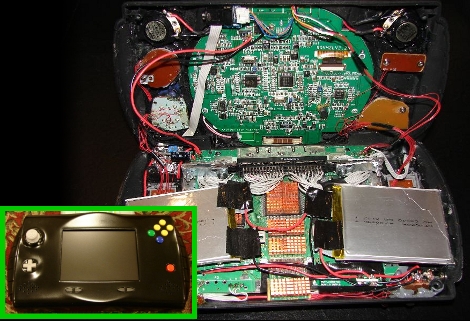[youtube=http://www.youtube.com/watch?v=qLOQOTa4-aY]
[Rossum] is at it again. This time, he has created a super tiny media device to get us drooling. You might recall him from the 8-bit device we showed you before. The Nanotouch is roughly the dimensions of a 96×64 OLED screen(slightly larger than a quarter), with about 1/3 to 1/2 of an inch of stuff packed behind it. The screen itself is mounted atop 4 buttons. This allows you to depress the screen edges for navigation. He does mention that this design needs a little work to prolong the life of the screen, but we really like the intuitive way of navigating. At its heart is an ATmega32u4.
We thought his last version was fantastic, but this one has us enamored. He states he’ll publish schematics and code, as he did before. We just didn’t want to wait to share.
[thanks Joakim]















